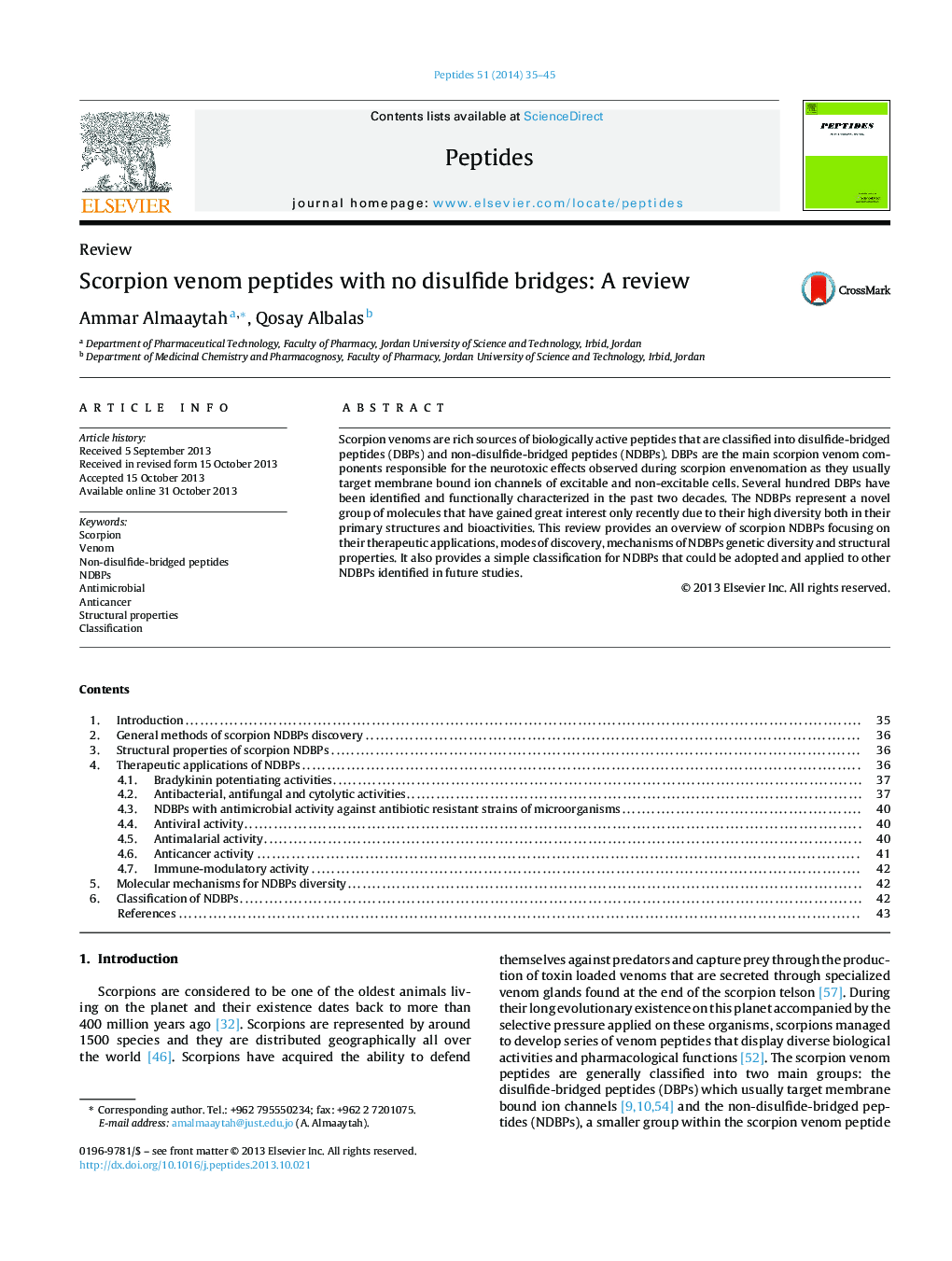| Article ID | Journal | Published Year | Pages | File Type |
|---|---|---|---|---|
| 8348531 | Peptides | 2014 | 11 Pages |
Abstract
Scorpion venoms are rich sources of biologically active peptides that are classified into disulfide-bridged peptides (DBPs) and non-disulfide-bridged peptides (NDBPs). DBPs are the main scorpion venom components responsible for the neurotoxic effects observed during scorpion envenomation as they usually target membrane bound ion channels of excitable and non-excitable cells. Several hundred DBPs have been identified and functionally characterized in the past two decades. The NDBPs represent a novel group of molecules that have gained great interest only recently due to their high diversity both in their primary structures and bioactivities. This review provides an overview of scorpion NDBPs focusing on their therapeutic applications, modes of discovery, mechanisms of NDBPs genetic diversity and structural properties. It also provides a simple classification for NDBPs that could be adopted and applied to other NDBPs identified in future studies.
Related Topics
Life Sciences
Biochemistry, Genetics and Molecular Biology
Biochemistry
Authors
Ammar Almaaytah, Qosay Albalas,
